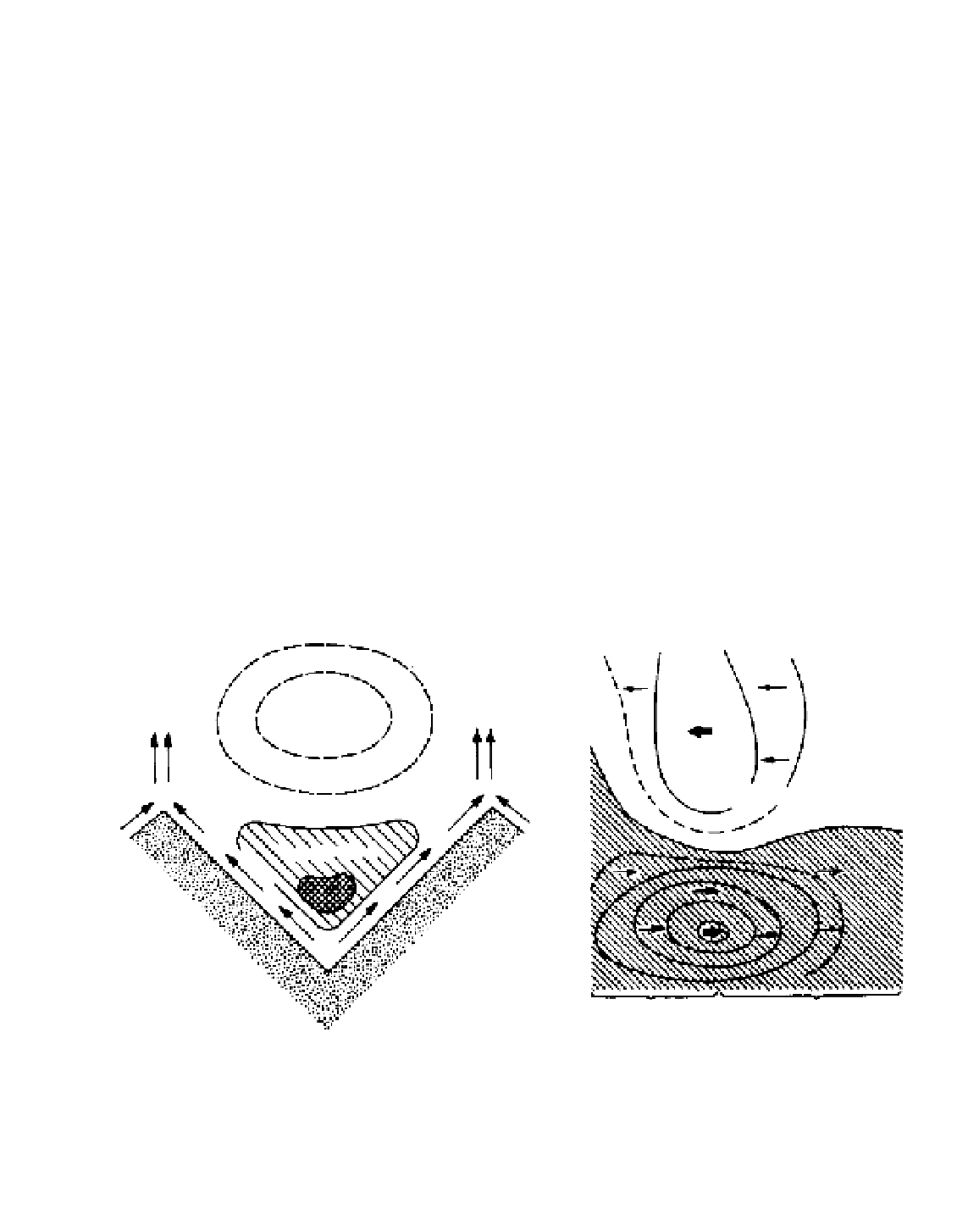Geoscience Reference
In-Depth Information
C LOCAL WINDS
air in a valley is laterally constricted, compared with
that over an equivalent area of lowland, and so tends to
expand vertically. The volume ratio of lowland/valley
air is typically about 2 or 3:1 and this difference in
heating sets up a density and pressure differential, which
causes air to flow from the lowland up the axis of the
valley. This valley wind (Figure 6.10) is generally light
and requires a weak regional pressure gradient in order
to develop. This flow along the main valley develops
more or less simultaneously with
anabatic
(upslope)
winds, which result from greater heating of the valley
sides compared with the valley floor. These slope winds
rise above the ridge tops and feed an upper return current
along the line of the valley to compensate for the valley
wind. This feature may be obscured, however, by the
regional airflow. Speeds reach a maximum at around
14:00 hours.
At night, there is a reverse process as denser cold air
at higher elevations drains into depressions and valleys;
this is known as a
katabatic
wind. If the air drains down-
slope into an open valley, a 'mountain wind' develops
more or less simultaneously along the axis of the valley.
This flows towards the plain, where it replaces warmer,
For a weather observer, local controls of air movement
may present more problems than the effects of the major
planetary forces discussed above. Diurnal tendencies
are superimposed upon both the large- and the small-
scale patterns of wind velocity. These are particularly
noticeable in the case of local winds. Under normal
conditions, wind velocities tend to be least about dawn
when there is little vertical thermal mixing and the lower
air is less affected by the velocity of the air aloft (see
Chapter 7A). Conversely, velocities of some local winds
are greatest around 13:00 to 14:00 hours, when the air
is most subject to terrestrial heating and vertical motion,
thereby enabling coupling to the upper-air movement.
Air always moves more freely away from the surface,
because it is not subject to the retarding effects of
friction and obstruction.
1 Mountain and valley winds
Terrain features give rise to their own special meteo-
rological conditions. On warm, sunny days, the heated
Anti-valley
wind
div.
div.
Ridge
wind
Ridge level
Valley wind
Plain
Distal
end
Valley
Proximal
end
A
B
Figure 6.10
Valley winds in an ideal V-shaped valley. (A) Section across the valley. The valley wind and anti-valley wind are directed
at right angles to the plane of the paper. The arrows show the slope and ridge wind in the plane of the paper, the latter diverging (div.)
into the anti-valley wind system. (B) Section running along the centre of the valley and out on to the adjacent plain, illustrating the valley
wind (below) and the anti-valley wind (above).
Source
: After Buettner and Thyer (1965).

